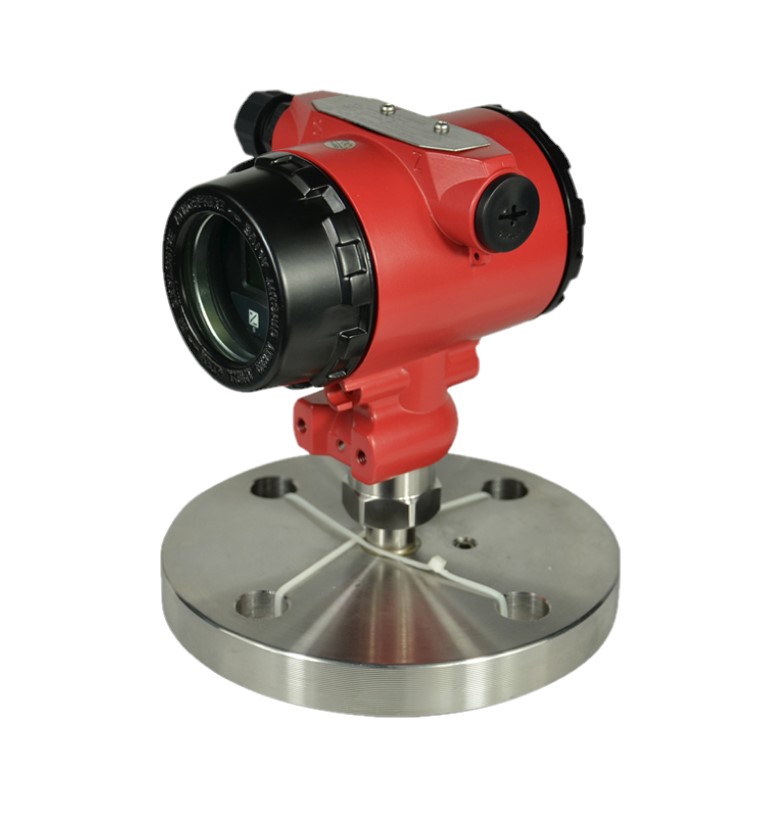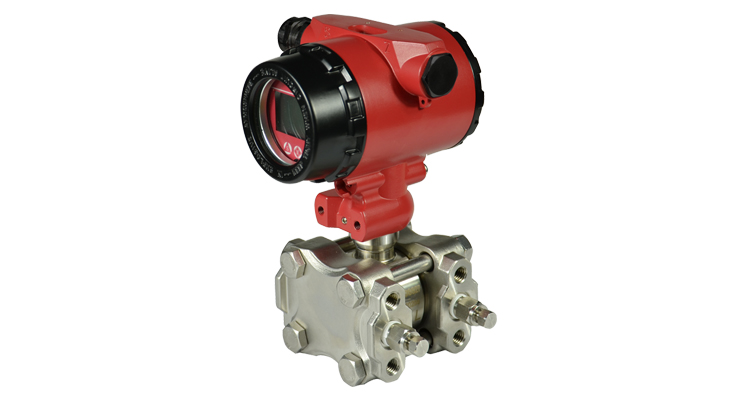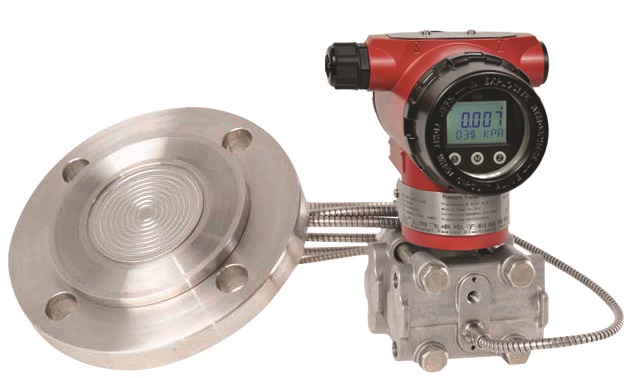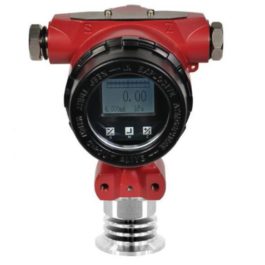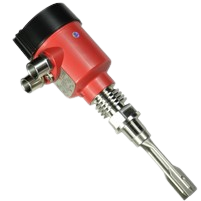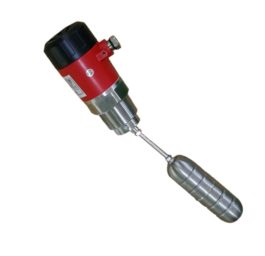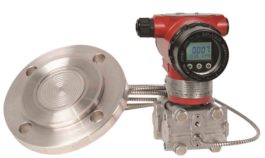Pressure Level Transmitter
$ 1,092.00 – $ 2,111.20Price range: $ 1,092.00 through $ 2,111.20
A pressure level transmitter is a precision instrument used to measure the pressure exerted by a fluid within a container, translating this pressure into an electrical signal that correlates to fluid level. Essential in industries like oil and gas, chemical processing, and water treatment, these devices ensure accurate monitoring and control of liquid levels. Pressure level transmitters come in various types, such as differential, gauge, and absolute, each suitable for specific applications.
Key features include high accuracy, typically within ±0.1% to ±0.5% of full scale, and a wide measurement range, from low to high pressures. The output signal, often a 4-20 mA current loop, ensures compatibility with industrial control systems. Robust construction materials, like stainless steel or Hastelloy, enable use in harsh environments. Environmental ratings such as IP65 to IP68 protect against dust and water ingress, enhancing durability.
Installation involves secure mounting, proper wiring, and careful calibration to match process conditions. Regular maintenance, including visual inspections, cleaning, electrical checks, and calibration, ensures continued accuracy and reliability. These transmitters often feature digital interfaces for easy configuration and diagnostics, supporting advanced functions like remote monitoring.
Pressure level transmitters play a crucial role in maintaining operational safety and efficiency, providing reliable data to automate processes and prevent overflow or dry-run conditions. Their versatility and robustness make them indispensable tools in modern industrial applications, ensuring precise fluid level measurement and control.
Description
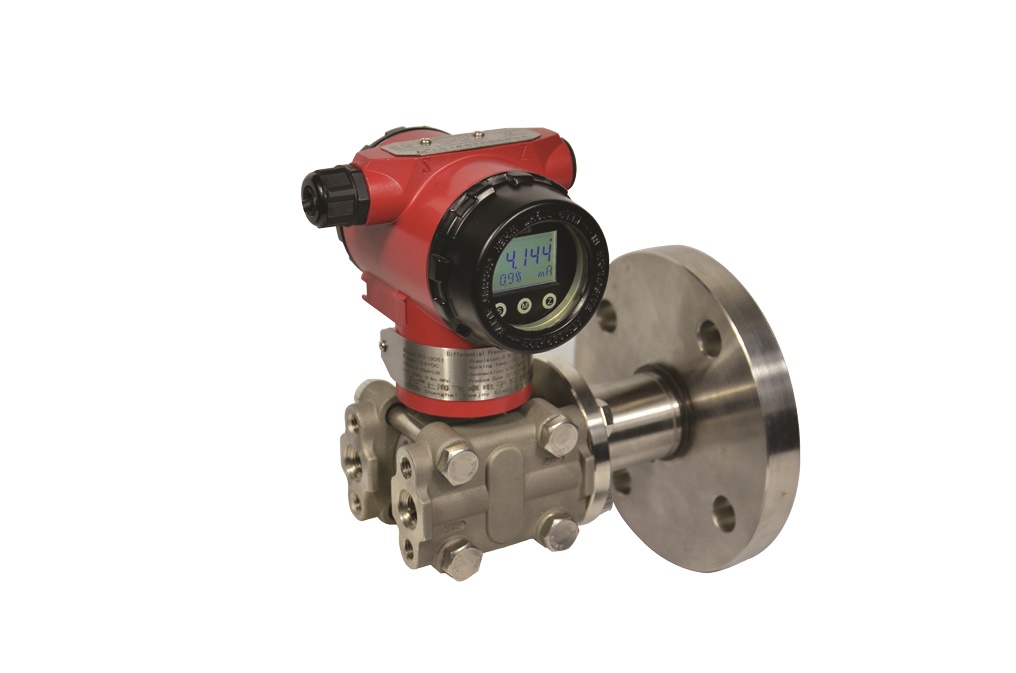
A pressure level transmitter is an essential device in various industrial applications, designed to measure and transmit the pressure or level of a fluid within a container, tank, or process system. Also, these transmitters are pivotal in industries such as oil and gas, chemical processing, water and wastewater management, pharmaceuticals, and food and beverage production. Finally, this comprehensive description will explore the principles, construction, operation, applications, advantages, and challenges of pressure level transmitters in detail.
Principles of Operation for a Pressure Level Transmitter
Pressure level transmitters operate on the fundamental principle that the pressure exerted by a fluid is directly proportional to its height. Also, the relationship between pressure and level allows these devices to infer the level of the fluid by measuring its pressure at a specific point. Finally, the principle can be applied using different methods, including hydrostatic pressure, differential pressure, and absolute pressure measurement.
Hydrostatic Pressure
Hydrostatic pressure measurement is based on the fact that the pressure at a given depth in a fluid is proportional to the height of the fluid column above it. Finally, this method is commonly used for open tanks and vessels where the fluid is subject to atmospheric pressure.
Differential Pressure
Differential pressure measurement involves comparing the pressure at two different points within the system. Also, by measuring the difference in pressure, the transmitter can determine the fluid level. Finally, this method is useful for closed tanks where the pressure inside the tank differs from the ambient atmospheric pressure.
Absolute Pressure
Absolute pressure measurement refers to measuring the total pressure exerted by a fluid, including atmospheric pressure. In addition, this method is used in applications where knowing the total pressure is critical for accurate level measurement.
Construction of a Pressure Level Transmitter
A pressure level transmitter typically consists of the following main components:
Pressure Sensor
The pressure sensor is the core component of the transmitter, responsible for detecting the pressure exerted by the fluid. Additionally, it can be based on various technologies, including piezoelectric, capacitive, resistive, or strain gauge sensors. Finally, the choice of sensor technology depends on factors such as accuracy, range, environmental conditions, and fluid properties.
Diaphragm
The diaphragm is a thin, flexible membrane that separates the fluid from the internal components of the transmitter. When the fluid exerts pressure on the diaphragm, it deflects, causing a change in the sensor’s output. The material of the diaphragm must be compatible with the fluid to prevent corrosion and ensure long-term reliability.
Transducer
The transducer converts the mechanical deformation of the diaphragm into an electrical signal. This signal is proportional to the pressure exerted by the fluid and can be processed to determine the fluid level.
Electronics Housing
The electronics housing contains the signal processing and transmission circuitry. In addition, it protects the internal components from environmental factors such as moisture, dust, and temperature variations. The housing is typically made from durable materials like stainless steel or industrial-grade plastics.
Mounting Hardware
Pressure level transmitters come with various mounting options to fit different installation requirements. Common mounting configurations include threaded connections, flanges, and clamps, allowing the transmitter to be securely attached to tanks, vessels, or pipelines.
Operation of a Pressure Level Transmitter
The operation of a pressure level transmitter involves several key steps:
Pressure Detection
The pressure sensor detects the pressure exerted by the fluid on the diaphragm. Finally, the degree of deformation of the diaphragm is proportional to the pressure.
Signal Conversion
The transducer converts the mechanical deformation into an electrical signal.
Signal Processing
The electrical signal is processed by the onboard electronics to account for factors such as temperature compensation, calibration, and linearization.
Output Transmission
The processed signal is transmitted to a control system or display device. In addition, common output formats include analog signals (e.g., 4-20 mA) and digital communication protocols (e.g., HART, Modbus).
Challenges
Despite their advantages, pressure level transmitters also face certain challenges:
Pressure Transients
Rapid changes in pressure, known as pressure transients, can affect the accuracy of level measurements. Moreover, these transients can be caused by factors such as pump start-ups, valve operations, and fluid surges. Finally, proper damping and signal processing are required to mitigate these effects.
Temperature Effects
Temperature variations can impact the accuracy of pressure level transmitters. Also, changes in temperature can cause thermal expansion or contraction of the sensor and diaphragm, leading to measurement errors. Finally, temperature compensation techniques are used to minimize these effects.
Foaming and Bubbles
In some applications, the presence of foam or gas bubbles in the fluid can interfere with the pressure measurement. Also, special sensor designs and installation techniques are required to address these challenges and ensure accurate measurements.
Calibration
Pressure level transmitters require regular calibration to maintain their accuracy. Calibration involves comparing the transmitter’s output with a known reference standard and making adjustments as needed. In addition, this process can be time-consuming and requires specialized equipment.
Conclusion
Pressure level transmitters are indispensable tools for accurate and reliable level measurement in various industrial applications. Also, their high accuracy, reliability, and versatility make them suitable for a wide range of fluids and operating conditions. While they face challenges such as pressure transients, temperature effects, and calibration requirements, these can be effectively managed with proper design, installation, and maintenance practices. Finally, by providing precise level measurements, pressure level transmitters contribute to the efficiency, safety, and quality of industrial processes, making them a critical component in modern automation and control systems.
Specifications
A pressure level transmitter is an essential instrument used to measure the level of a fluid in a vessel by determining the pressure exerted by the fluid. Here are the typical specifications you might find for a pressure level transmitter:
Measurement Range:
- Pressure Range: Typically specified in units such as psi (pounds per square inch), bar, Pa (Pascals), or mmH2O. For example, 0 to 100 psi or 0 to 10 bar.
- Level Range: Specified in height units such as meters, feet, or inches. For example, 0 to 10 meters or 0 to 30 feet.
Accuracy:
- Usually expressed as a percentage of full scale, e.g., ±0.1%, ±0.25%, or ±0.5% of the full-scale range.
Output Signal:
- Common output signals include 4-20 mA, 0-10 V, HART, Profibus, or Modbus.
Power Supply:
- Voltage or current requirements for operation, typically 12-36 VDC for 4-20 mA transmitters.
Process Connection:
- Types and sizes of connections to the process fluid, such as 1/2″ NPT, 1/4″ NPT, flanges, or sanitary connections.
Materials of Construction:
- Materials used for the wetted parts (in contact with the process fluid), such as stainless steel (316L), Hastelloy, titanium, or ceramic.
- Housing materials, which could be aluminum, stainless steel, or plastic.
Environmental Ratings:
- Ingress Protection (IP) Rating: Indicates the degree of protection against dust and water, such as IP65, IP67, or IP68.
- Temperature Range: Operating and storage temperature ranges, e.g., -40 to 85°C (-40 to 185°F).
- Humidity Range: Relative humidity the transmitter can withstand, typically 0-100% non-condensing.
Response Time:
- The time it takes for the transmitter to respond to a change in level, usually specified in milliseconds or seconds.
Zero and Span Adjustment:
- Ability to adjust the zero point and span (range) of the transmitter to fit specific application needs.
Overpressure Limit:
- Maximum pressure the transmitter can withstand without being damaged, often a multiple of the maximum measurement range.
Approval and Certifications:
- Certifications for use in hazardous areas, such as ATEX, IECEx, FM, CSA.
- Compliance with industry standards like CE, RoHS, or SIL (Safety Integrity Level).
Display and Interface:
- Built-in display options (LCD, LED) for local readout of measurements.
- Configuration interface, which may include buttons, a magnetic tool, or remote configuration via software.
Mounting Options:
- Options for mounting the transmitter, such as wall mount, pipe mount, or direct mount to the process connection.
Damping:
- Adjustable damping settings to filter out rapid fluctuations in the measurement.
Calibration:
- Calibration frequency and procedures.
- Availability of calibration certificates and traceability to standards.
Example Specification Sheet:
Measurement Range:
- Pressure: 0 to 100 psi
- Level: 0 to 10 meters
Accuracy: ±0.25% of full scale
Output Signal: 4-20 mA
Power Supply: 24 VDC
Process Connection: 1/2″ NPT
Materials of Construction:
- Wetted Parts: 316L Stainless Steel
- Housing: Aluminum
Environmental Ratings:
- IP67
- Operating Temperature: -40 to 85°C
- Humidity: 0-100% RH non-condensing
Response Time: <100 MS
Zero and Span Adjustment: Yes
Overpressure Limit: 200 psi
Approval and Certifications:
Display and Interface:
- LCD Display
- Configuration via HART
Mounting Options: Pipe mount bracket included
Damping: Adjustable 0-10 seconds
Calibration: Annual calibration recommended; certificates available.
These specifications can vary based on the manufacturer and model of the pressure level transmitter. Always refer to the specific product datasheet for detailed and accurate information.
Installation
Installing a pressure level transmitter involves several steps to ensure accurate measurement and reliable performance. Here’s a detailed guide to help you through the process:
Tools and Materials Needed:
- Pressure level transmitter
- Appropriate process connections (e.g., flanges, adapters)
- Mounting hardware (brackets, screws)
- Wrenches and pliers
- Screwdrivers
- Pipe thread sealant or PTFE tape
- Multimeter
- Calibration equipment (if needed)
- User manual for the specific transmitter
Step-by-Step Instructions:
Safety Precautions:
- Ensure the system is depressurized and turned off before starting the installation.
- Wear appropriate personal protective equipment (PPE), such as gloves and safety glasses.
Site Preparation:
- Identify the installation location. Ensure it is accessible for maintenance and free from excessive vibration, temperature extremes, and corrosive environments.
- Verify that the process connection type and size match the transmitter specifications.
Mechanical Installation:
Mounting:
- Attach the mounting bracket to the transmitter if applicable.
- Secure the transmitter to the designated mounting surface or structure. Ensure it is mounted vertically and firmly to avoid vibrations.
Process Connection:
- Apply pipe thread sealant or PTFE tape to the threads of the process connection to ensure a tight seal.
- Connect the transmitter to the process connection (e.g., flange, threaded port). Use appropriate tools to tighten connections, ensuring no leaks. Avoid over-tightening to prevent damage.
Electrical Installation:
Wiring:
- Remove the transmitter cover to access the wiring terminals.
- Connect the power supply wires to the appropriate terminals, usually marked with “+” and “-” for the 4-20 mA loop.
- Connect the signal wires to the output terminals. Refer to the wiring diagram in the user manual for correct connections.
- Ensure all connections are secure and insulated with electrical tape or heat shrink tubing.
Grounding:
- Connect the grounding wire to a suitable ground point. This is crucial for safety and to prevent electrical interference.
Power Up and Configuration:
- Reattach the transmitter cover securely.
- Power on the system and check for proper operation.
- Use a multimeter to verify the output signal (e.g., 4-20 mA) is within the expected range.
- Configure the transmitter settings (e.g., zero and span adjustments) using the interface or configuration software if required. Refer to the user manual for detailed instructions.
Calibration:
- Calibrate the transmitter if necessary. Use a known reference pressure or level to adjust the transmitter output to match the reference.
- Follow the calibration procedures outlined in the user manual or provided calibration equipment instructions.
Leak Testing:
- Check all connections for leaks using a suitable leak detection method (e.g., soap solution for gas leaks).
- If any leaks are detected, depressurize the system and tighten connections as needed.
Final Inspection:
- Verify that the transmitter is securely mounted and all connections are tight and leak-free.
- Ensure the transmitter is providing accurate readings by comparing it with a known reference.
- Confirm that the transmitter’s output signal corresponds correctly to the actual pressure or level being measured.
Documentation:
- Record the installation details, including the date, location, settings, and any calibration data.
- Keep the documentation for future reference and maintenance.
Additional Tips:
- Always refer to the specific transmitter’s user manual for detailed installation instructions and safety information.
- If the transmitter is installed in a hazardous area, ensure it meets the necessary certification and installation standards (e.g., ATEX, IECEx).
- Regularly inspect the transmitter and connections to ensure ongoing accuracy and reliability.
- Consult a professional technician if you encounter any issues during installation or operation.
By following these installation procedures, you can ensure that your pressure level transmitter is installed correctly and functions reliably.
Maintenance
Regular maintenance of a pressure level transmitter is essential to ensure accurate readings and reliable performance. Here are the steps to perform proper maintenance:
Tools and Materials Needed:
- Multimeter
- Calibration equipment (pressure calibrator, reference gauge)
- Cleaning cloths
- Isopropyl alcohol or suitable cleaning solution
- Screwdrivers and wrenches
- Replacement parts (if needed)
- User manual for the specific transmitter
Step-by-Step Instructions:
- Safety Precautions:
- Ensure the system is depressurized and turned off before performing any maintenance.
- Wear appropriate personal protective equipment (PPE), such as gloves and safety glasses.
- Visual Inspection:
- Inspect the transmitter and its surroundings for any signs of damage, corrosion, or wear.
- Check the mounting hardware to ensure the transmitter is securely attached and free from excessive vibrations.
- Cleaning:
- Clean the exterior of the transmitter using a cloth dampened with isopropyl alcohol or a suitable cleaning solution.
- Avoid using harsh chemicals or abrasive materials that could damage the transmitter’s surface.
- Ensure that the sensor port is clean and free of any debris or buildup.
- Electrical Connection Check:
- Inspect all electrical connections for tightness and signs of corrosion.
- Use a screwdriver or wrench to tighten any loose connections.
- If any connections are corroded, disconnect them, clean the contacts with isopropyl alcohol, and reattach them securely.
- Wiring Inspection:
- Examine all wiring for signs of wear, fraying, or damage.
- Ensure that wires are properly routed and secured away from heat sources and moving parts.
- Replace any damaged wires and secure loose ones with cable ties.
- Sensor Inspection:
- Inspect the sensor for any signs of damage or contamination.
- If the sensor is removable, carefully clean it with a soft cloth and isopropyl alcohol.
- Ensure the sensor is properly seated and secured in its housing.
- Zero and Span Check:
- Verify the transmitter’s zero and span settings to ensure accurate measurements.
- Use a known reference pressure or level to check the transmitter’s output.
- Adjust the zero and span settings if necessary, following the user manual instructions.
- Calibration:
- Calibrate the transmitter periodically to maintain accuracy.
- Use a pressure calibrator or a reference gauge to apply known pressures and verify the transmitter’s output.
- Adjust the transmitter’s calibration settings as needed to match the reference values.
- Document the calibration results for future reference.
- Functional Testing:
- Reconnect the power supply and turn on the system.
- Use a multimeter to verify the output signal (e.g., 4-20 mA) is within the expected range.
- Observe the transmitter’s readings and compare them with known reference values to ensure accuracy.
- Leak Testing:
- Check all connections for leaks using a suitable leak detection method (e.g., soap solution for gas leaks).
- If any leaks are detected, depressurize the system and tighten connections as needed.
- Environmental Checks:
- Ensure that the transmitter’s environmental conditions (e.g., temperature, humidity) are within the specified operating ranges.
- Inspect the transmitter’s housing and seals to ensure they are intact and provide adequate protection against dust and moisture.
- Documentation:
- Record the maintenance activities, including the date, observations, actions taken, and any parts replaced.
- Keep the maintenance log for future reference and compliance with industry standards.
Additional Tips:
- Schedule regular maintenance intervals based on the operating conditions and manufacturer’s recommendations.
- If the transmitter is used in a harsh environment, more frequent maintenance may be necessary.
- Always refer to the specific transmitter’s user manual for detailed maintenance procedures and safety information.
- If you encounter issues that cannot be resolved through regular maintenance, consult a professional technician for further assistance.
By following these maintenance procedures, you can ensure that your pressure level transmitter remains accurate and reliable over time.
Advantages / Disadvantages
Advantages
Pressure level transmitters offer several advantages that make them valuable in industrial applications:
High Accuracy
These transmitters provide highly accurate level measurements, ensuring precise control of industrial processes. The accuracy is typically within ±0.1% to ±0.5% of the full-scale range, depending on the sensor technology and application.
Reliability
Pressure level transmitters are designed for long-term reliability, even in harsh environments. They are built to withstand extreme temperatures, pressures, and corrosive fluids, ensuring consistent performance over time.
Versatility
These devices can measure the levels of a wide range of fluids, including liquids, gases, and slurries. They are suitable for both open and closed tanks, making them versatile for various applications.
Minimal Maintenance
With no moving parts, pressure level transmitters require minimal maintenance. This reduces downtime and maintenance costs, contributing to overall operational efficiency.
Ease of Integration
Pressure level transmitters can be easily integrated into existing control systems and automation platforms. Their standardized output signals and communication protocols allow seamless connectivity and data exchange.
Applications
Applications
Pressure level transmitters are used in a wide range of industrial applications due to their versatility and accuracy. Some common applications include:
Oil and Gas
In the oil and gas industry, pressure level transmitters are used to monitor the levels of crude oil, refined products, and other fluids in storage tanks and pipelines. Accurate level measurement is crucial for inventory management, process control, and safety.
Chemical Processing
Chemical plants use pressure level transmitters to measure the levels of various chemicals in reactors, storage tanks, and processing vessels. These measurements are essential for maintaining process efficiency, product quality, and safety.
Water and Wastewater Treatment
In water and wastewater treatment plants, pressure level transmitters monitor the levels of water, sewage, and sludge in tanks and treatment units. Accurate level measurement ensures effective treatment processes and regulatory compliance.
Pharmaceuticals
The pharmaceutical industry relies on pressure level transmitters to measure the levels of ingredients, solvents, and finished products in various stages of production. Precise level control is vital for ensuring product consistency and quality.
Food and Beverage
In food and beverage production, pressure level transmitters are used to monitor the levels of liquids, syrups, and other ingredients in storage tanks and processing equipment. Accurate level measurement helps maintain product quality and consistency.
Q&A
Q: What is a pressure level transmitter?
A: A pressure level transmitter is a device used to measure the level of a fluid within a container, tank, or process system by determining the pressure exerted by the fluid. The transmitter converts this pressure measurement into an electrical signal that can be read and interpreted by control systems.
Q: How does a pressure level transmitter work?
A: Pressure level transmitters operate based on the principle that the pressure exerted by a fluid is directly proportional to its height. The device measures the pressure at a specific point in the fluid column and uses this data to calculate the fluid level. This process involves detecting the pressure through a sensor, converting it into an electrical signal, processing the signal, and transmitting it to a display or control system.
Q: What types of pressure level transmitters are there?
A: The main types of pressure level transmitters are:
- Hydrostatic pressure transmitters: Measure the pressure at a given depth in an open tank, proportional to the height of the fluid above it.
- Differential pressure transmitters: Measure the difference in pressure between two points, useful for closed tanks where internal pressure may differ from atmospheric pressure.
- Absolute pressure transmitters: Measure the total pressure exerted by the fluid, including atmospheric pressure.
Q: What are the main components of a pressure level transmitter?
A: A pressure level transmitter typically consists of:
- Pressure sensor: Detects the fluid pressure.
- Diaphragm: A flexible membrane that deflects under pressure.
- Transducer: Converts the mechanical deformation of the diaphragm into an electrical signal.
- Electronics housing: Contains signal processing and transmission circuitry.
- Mounting hardware: Allows secure installation in the system.
Q: What are the advantages of using a pressure level transmitter?
A: The advantages include:
- High accuracy: Provides precise level measurements.
- Reliability: Designed for long-term use in harsh environments.
- Versatility: Suitable for a wide range of fluids and applications.
- Minimal maintenance: No moving parts, reducing maintenance needs.
- Ease of integration: Standardized outputs for easy connection to control systems.
Q6: What industries use pressure level transmitters?
A: Industries that use pressure level transmitters include:
- Oil and gas: For monitoring levels of crude oil and refined products.
- Chemical processing: For mixing and processing various chemicals.
- Water and wastewater treatment: For monitoring levels in treatment plants.
- Pharmaceuticals: For precise ingredient and product level measurements.
- Food and beverage: For blending and processing ingredients.
Q: What are the challenges associated with pressure level transmitters?
A: The challenges include:
- Pressure transients: Rapid pressure changes can affect accuracy.
- Temperature effects: Temperature variations can cause measurement errors.
- Foaming and bubbles: Presence of foam or gas bubbles can interfere with measurements.
- Calibration: Regular calibration is required to maintain accuracy.
Q: How do you maintain a pressure level transmitter?
A: Maintenance involves:
- Regular calibration: Ensuring the transmitter’s output matches a known reference standard.
- Inspection: Checking for signs of wear, damage, or fouling.
- Cleaning: Removing any buildup or deposits on the sensor and diaphragm.
- Environmental protection: Ensuring the housing and connections are secure against environmental factors.
Q: Can pressure level transmitters be used in high-temperature environments?
A: Yes, pressure level transmitters can be used in high-temperature environments, but it is crucial to select a transmitter designed for such conditions. High-temperature applications may require transmitters with special materials and temperature compensation features to maintain accuracy.
Q: How is the signal from a pressure level transmitter transmitted to a control system?
A: The signal from a pressure level transmitter is typically transmitted as an analog signal (e.g., 4-20 mA) or via digital communication protocols (e.g., HART, Modbus). This allows seamless integration with control systems and real-time monitoring and control of fluid levels.
Q: What factors should be considered when selecting a pressure level transmitter?
A: Factors to consider include:
- Fluid properties: Chemical composition, viscosity, and temperature.
- Measurement range: The expected range of fluid levels.
- Environmental conditions: Temperature, pressure, and potential corrosive elements.
- Accuracy requirements: The level of precision needed for the application.
- Installation requirements: Mounting options and compatibility with existing systems.
Q: Are pressure level transmitters affected by the density of the fluid?
A: Yes, the density of the fluid affects the pressure measurement. Pressure level transmitters are typically calibrated for a specific fluid density. If the fluid density changes, recalibration or compensation may be required to maintain accurate level measurements.
Q: What is the difference between a pressure level transmitter and a level gauge?
A: A pressure level transmitter measures the fluid level by determining the pressure exerted by the fluid and converting it into an electrical signal for remote monitoring and control. A level gauge, on the other hand, provides a direct visual indication of the fluid level, typically through a sight glass or float mechanism.
Q: Can pressure level transmitters be used for both liquids and gases?
A: Pressure level transmitters are primarily used for measuring the level of liquids. However, they can also be used to measure the pressure of gases. For gas level measurement, the transmitter must be calibrated and designed for the specific properties and conditions of the gas.
Downloads
Drawings


